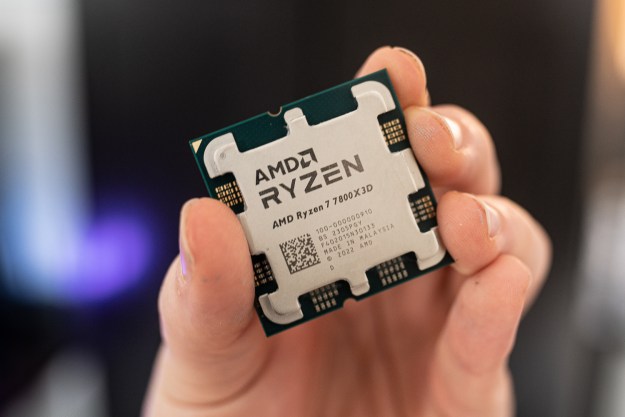A second-generation Ryzen desktop processor recently surfaced in benchmarks: The Ryzen 7 2700X. It’s an eight-core sample distributed to system manufacturers for testing that relies on AMD’s refreshed “Zen” CPU architecture dubbed “Zen+.” It follows another second-generation Ryzen chip, the six-core Ryzen 5 2600 processor, that appeared in January in the SiSoftware database.
For comparison, here are the numbers yanked from benchmarks regarding these two unannounced processors along with the first-generation CPUs they replace:
| Ryzen 7 2700X | Ryzen 7 1700X | Ryzen 5 2600 | Ryzen 5 1600 | |
| Architecture: |
Zen+ |
Zen |
Zen+ |
Zen |
| Process tech: |
12nm+ |
14nm |
12nm+ |
14nm |
| Cores: |
8 |
8 |
6 |
6 |
| Threads: |
16 |
16 |
12 |
12 |
| Base speed: |
3.7GHz |
3.4GHz |
3.4GHz |
3.2GHz |
| Max speed: |
4.1GHz |
3.8GHz |
3.8GHz |
3.6GHz |
| XFR: |
+100MHz (?) |
+100MHz |
+100MHz (?) |
+100MHz |
| L2 cache: |
4MB |
4MB |
3MB |
3MB |
| L3 cache: |
16MB |
16MB |
16MB |
16MB |
| Power use: |
95 watts |
95 watts |
65 watts |
65 watts |
As the numbers show, the upcoming Ryzen 7 2700X will sport a 300MHz faster base speed than its predecessor along with a higher boost speed at 4.1GHz. With Extended Frequency Range (XFR), this chip could jump up an additional 100MHz for a maximum boost of 4.2GHz. Meanwhile, the jump from AMD’s Ryzen 5 1600 to the upcoming Ryzen 5 2600 won’t be quite as dramatic with a 200MHz difference between the two.
XFR is part of AMD’s SenseMI technology built into its Ryzen processors. Embedded sensors determine the current temperatures, power use, and current speed of the chip. If the thermal conditions are right, Precision Boost will crank up the chip’s base speed when you need more processing power. The boost can go even higher if using just two cores.
From there, XFR will increase the speed of two cores even further based on the PC’s cooling system: The lower the temperature, the higher the speed boost. The maximum, however, appears to be locked at 100MHz, at least in the first-generation Ryzen CPUs. That could change with XFR 2.0 in the newer CPUs. Note that for XFR to hit its maximum allowance, PCs need premium air or water-based cooling solutions.
AMD’s newer Ryzen-branded desktop chips are reportedly code-named as “Pinnacle Ridge” whereas the current CPUs are/were code-named as “Summit Ridge” prior to their release. Of course, keep in mind that the two second-generation Ryzen chips sampled out for testing are just that — samples. The numbers we see now could be preliminary, meaning AMD could squeeze out a bit more performance before they reportedly hit the market in April.
AMD’s first wave of original Ryzen 7 and Ryzen 5 CPUs hit the market in March 2017 followed by the Ryzen 3 units in July 2017. That said, seeing an April 2018 release of the new Ryzen 7 and Ryzen 5 CPUs isn’t out of the question. Second-generation Ryzen 3 chips could appear in April as well, or follow the first-generation’s lead with a summer-bound release.
AMD said in December that the new processors won’t need a new motherboard as seen with the original Ryzen processor launch. AMD plans to support its AM4 motherboard “seat” through 2020, indicating third- and fourth-generation Ryzen CPUs will be AM4-based as well.
Editors' Recommendations
- AMD’s upcoming APUs might destroy your GPU
- AMD makes older PCs more upgradeable once again
- AMD’s new CPU slammed as ‘anti-consumer at best’
- The gamers have spoken: AMD obliterates Intel in CPU sales
- AMD’s upcoming Ryzen 5 5600X3D could completely dethrone Intel in budget builds



